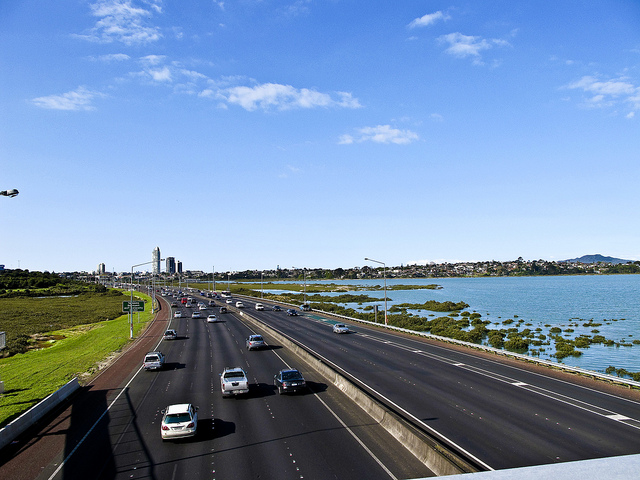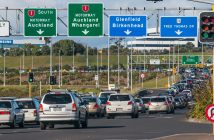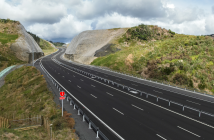Introduction of dynamic motorway tolls in Auckland would help decongest the road network and provide the quickest, most efficient and most equitable way to bridge the annual $400m transport investment funding gap, an industry expert told the annual Building Nation’s symposium.
New Zealand Council for Infrastructure Development CEO Stephen Selwood says he shared the business sector’s concern that the proposed timeframe for addressing Auckland’s transport issues was far too long.
“A 10-year wait for road pricing as suggested in the recent Auckland Transport Alignment Project (ATAP) report leaves the agreed investment programme $4 billion short and, if not addressed urgently, congestion will become chronic,” he maintains. “An immediate solution to funding and congestion is required.”
Mr Selwood says introducing a dynamic toll on the motorway system at a price which maximises traffic flows would allow more traffic to use the motorway at faster speeds, providing a direct benefit to users, and help bridge the $4 billion t10-year funding gap.
“The optimum speed which maximises traffic flows is between 80km/h and 60 km/h,” he notes. “At those speeds you can travel 20 kilometres on the motorway in just 15 or 20 minutes.
“When speeds rise above 80 km/hr, safe drivers increase the gap between themselves and the car in front. While travel times are faster, the overall traffic flow is reduced.
“And when speeds drop to just 20 km/h – the typical average speed in the morning and evening peaks – it takes an hour to drive the same twenty kilometres.
“That’s a waste of everyone’s time and money and is a huge cause of frustration for Aucklanders.”
In his opinion, dynamic tolling would allow authorities to adjust the price up and down to maximise traffic flow on the motorway and reduce demand on local roads.
“Those who choose to pay benefit from a faster trip. Those who don’t have options to drive free on other roads, take public transport, walk or cycle. Others may choose to share their car to reduce the cost of the toll or travel at different times.”
Motorists will set the price by their collective action, Mr Selwood says. “A system like this could be introduced within a few years using existing number plate recognition technology – like we have on the Northern Gateway toll road,” he explains. “There’s no need for a tracking device in every car or satellites in the sky to implement such a scheme.
Motorists would be advised of the current price on their phones before they leave, while variable message signs would also inform motorists well before they reach the motorway on-ramps.
Revenue from the tolls would be used to bridge the $400 million per annum funding gap identified by ATAP.
“Encouragingly, a 2015 Colmar Brunton survey of 5000 Aucklanders found 57 percent preferred the use of motorway tolls to fund transport investment than rates and fuel taxes,” Mr Selwood notes.
“A dynamic tolling system on the motorway will raise the funds needed for investment, without disincentivising travel and provide users a direct benefit in travel time savings – ‘win-win’ solution.”




